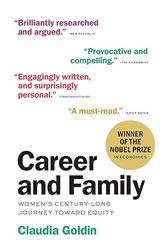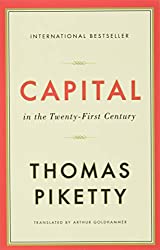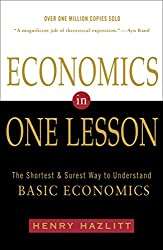
Rating: 8.5/10.
Career and Family: Women’s Century-Long Journey toward Equity by Claudia Goldin
Book by a Nobel Prize-winning economist about the gender pay gap and the ongoing struggle for gender equality, with a specific focus on the USA. Its central observation is that men’s and women’s earnings are roughly equal until the birth of their first child, after which they quickly diverge. The highest-paying jobs typically lack the flexibility required for child care, forcing at least one parent to choose a more adaptable yet less lucrative career. However, the significantly higher pay in less flexible and demanding jobs strongly incentivizes parents to sacrifice equality.
The data in this book mostly comes from various sources tracking college-educated women in the United States over the last century, observing the evolution of their careers and family lives across roughly five cohorts, categorized by graduation year. In the early 20th century, a very small proportion of women, less than 5%, graduated from college. This number has since risen dramatically, with women now earning more college degrees than men. Each generation exhibits distinct attitudes and patterns concerning careers and family life.
The first group of women, who graduated between 1900 and 1920, faced a stark choice between career and family, as marriage was often viewed as rendering a woman unfit for professional work. Women with college degrees during this era were rare, but those who did attain them often viewed their education as a means to support themselves, enabling them not to have to choose between a career and marriage.
The next cohort, graduating between 1920 and 1945, had greater career ambitions; however, they were hindered by the economic challenges of the Great Depression. During this period, employers, enjoying the luxury of being selective due to the economic climate, often implemented ‘marriage bars’ that banned married women from employment. As a result, many women worked for a few years before marrying and subsequently leaving the workforce.
The third group, graduating between 1945 and 1965, tended to marry young and have large families, known as the Baby Boomers. Many of these women sought flexible jobs outside the home, and considered child care less than a full-time responsibility.
A dramatic shift occurred in the 1960s and 70s with the advent of more effective contraceptives, particularly the invention of the pill. Previously, many young women felt compelled to marry early, partly due to the risk of unintended pregnancy. However, as romance and childbirth became decoupled, women began to marry later in life, after establishing their careers. This shift allowed them to pursue more ambitious professions, like engineering or academia, instead of lower-paying jobs to supplement their husband’s income, such as teaching or nursing. Yet, a consequence was that many of these women delayed family so much that they no longer were able to have children.
The issue of age-related infertility became well-known during the 1980s. Consequently, the final group, women who graduated between 1980 and 2000, often postponed having children until their late 30s to prioritize career development. Aware of the risks of delaying parenthood, they increasingly relied on technological advancements in reproductive medicine to conceive in their late 30s and 40s. Many of these women successfully balanced career and family life, though they often worked part-time, more so than their male counterparts.
Having examined the historical context of women in the workforce, the book now explores the causes of the gender pay gap and potential solutions. The evidence suggests that the gender pay gap is largely not due to explicit bias against women; in fact, women’s earnings are comparable to men’s until the birth of the first child, after which there is a significant divergence. This is especially evident in professions that demand long hours and offer little flexibility. In such fields, women with children often leave, while childless women continue to earn comparably to men.
An illustrative example is the legal profession, which is inherently inflexible due to the premium placed on availability. In this field, the more hours an employee is willing to work, the more valuable each hour becomes, as clients often prefer constant access to a specific partner, whose time cannot be easily substituted. Conversely, many medical professions, like veterinary medicine and pharmacy, have evolved to a model where professionals are more interchangeable, allowing for more flexibility. This adaptability has enabled women in these fields to achieve near parity in pay with their male counterparts. The book proposes that the most effective way to address the gender pay gap is to restructure jobs to eliminate the necessity for excessively long hours, advocating for a standard closer to 40 hours per week. This change would particularly benefit women with children, who are currently disadvantaged by the demands of high-hour jobs, and would be a significant step towards achieving gender equality in the workplace.
Overall, the book is well-written and thoroughly researched, addressing the complexities of the gender pay gap through evidence gathered from a wide array of sources, thereby presenting a compelling case. However, one notable weakness is its exclusive focus on the United States for all data sources and historical contexts. This limitation overlooks the fact that gender issues and their impacts on the workforce vary significantly around the world. Furthermore, while the book effectively argues that women, particularly those with children, would benefit if the workforce collectively agreed to work reasonable hours, it falls short in proposing specific policy changes to achieve this goal. The author suggests a cultural shift towards reduced working hours but does not delve into regulatory changes or policy interventions that could lead to this outcome without causing significant economic disruption.



